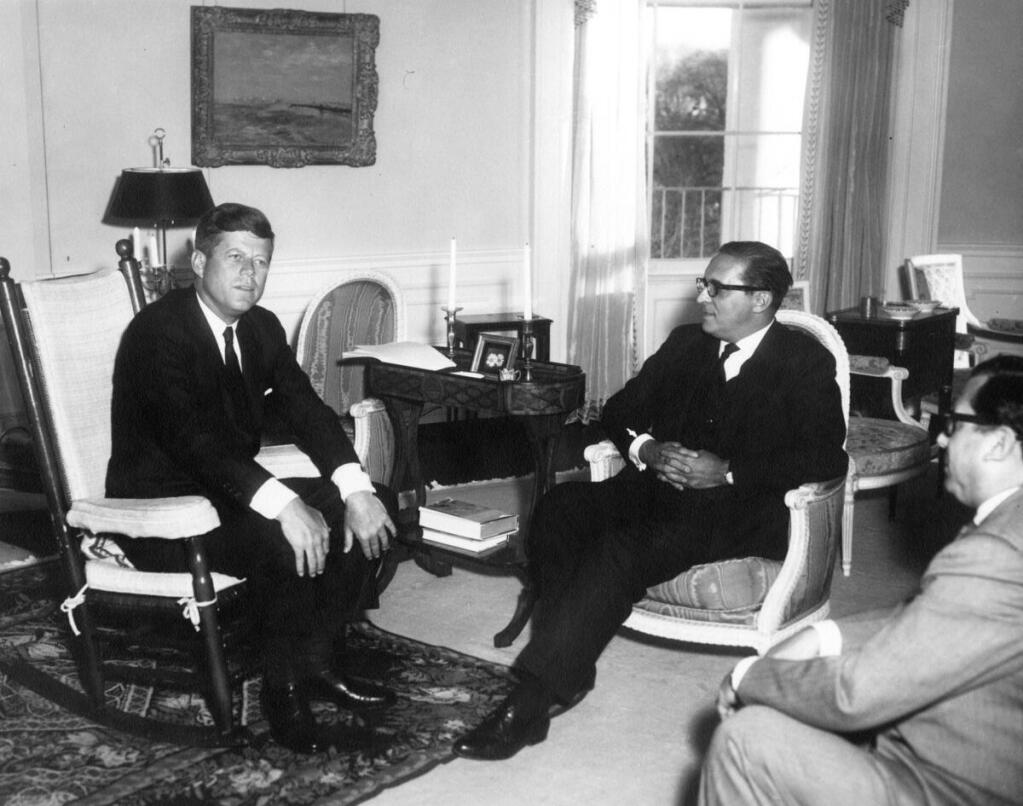Documento da semana! Classificação ideológica dos governadores eleitos em 1958 e 1960
Check out the full document in our collection: Telegrama aéreo de Ronald Schneider para o Departamento de Estado em Washington D.C. sobre governadores e vice-governadores do Brasil eleitos em 1958 e 1960 – NACE CNV-Brasil (usp.br)

Ideological classification of Brazilian governors elected in 1962 according to the Embassy of the United States of America
After we brought the ideological classification developed by the North American Embassy to separate Brazilian politicians in the 1962 elections – created with the aim of helping the Yankees know who they should support in the electoral process –, it was, of course, necessary to name the matter, showing how Brazilian politicians were actually classified by the Embassy .
In this week's document, we bring the ideological classification of governors elected in Brazil prepared by the United States Embassy in the 1958 and 1960 elections (remembering that, at the time, elections for governors did not all take place in the same year).
What can be seen from this classification is a preponderance of governors and vice-governors classified as “centrist” politicians (category no. 5), as in the case of governors Aluízio Alves (RN), Carvalho Pinto (SP), Juraci Magalhães (BA) and Magalhães Pinto (MG).
The governor of Guanabara, Carlos Lacerda, who was one of the main political allies of the Americans, was the only state representative placed in what would be considered the “best” category for Washington – that of “non-communist radical reformers” (category no. 4) –, despite for the Embassy to recognize that Lacerda could be in category 5, that is, the “centrists”.
On the left, the numbers are more modest – only four governors elected in 1958 and 1960 would fall into categories on this ideological spectrum.
Highlight for the governor of Rio Grande do Sul, Leonel Brizola, allocated to category no. 2 (“useful innocents”), but which the Embassy understood could very well be allocated to the group of “communists or crypto-communists” (category 1); and the governors of Amazonas (Gilberto Mestrinho), Goiás (Mauro Borges) and Piauí (Chagas Rodrigues), all seen as “left-wing ultranationalists” (category 3).
For North Americans, the 1962 elections would not change this picture of conservative-centrist predominance, see the cases of Ademar de Barros in São Paulo and Ildo Meneghetti in Rio Grande do Sul. An important addition in the field of the left would be the election of Miguel Arraes in Pernambuco, which would be allocated to category 2, but which, like Brizola, would end up under North American suspicion of being “communist or crypto-communist”.
Prof. Dr. Felipe Loureiro,
Deputy coordinator of NACE CNV-Brazil,
Institute of International Relations at the University of São Paulo
